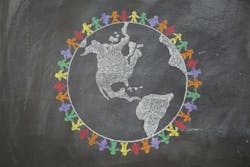Despite progress made in reducing HIV infections and AIDS-related deaths among children, a new report released by the Global Alliance for Ending AIDS in Children by 2030 shows that an urgent scale up of HIV services in countries worst affected by the pandemic is required to end AIDS by 2030.
The report, Transforming Vision Into Reality, shows that programs targeting vertical transmission of HIV have averted 4 million infections among children aged 0-14 years old since 2000. Globally, new HIV infections among children aged 0-14 years old have declined by 38% since 2015 and AIDS-related deaths have fallen by 43%.
Among the twelve Global Alliance countries, several have achieved strong coverage of lifelong antiretroviral therapy among pregnant and breastfeeding women living with HIV, with Uganda nearing 100%, United Republic of Tanzania at 98%, and South Africa at 97%. Mozambique has achieved 90% coverage, with Zambia at 90%, Angola at 89%, Kenya at 89%, Zimbabwe at 88%, and Cote d'Ivoire at 84%.
Global Alliance countries are innovating to overcome barriers and accelerate progress towards ending AIDS in children. However, despite advances neither the world nor Global Alliance countries are currently on track to reach HIV-related commitments for children and adolescents and the pace of progress in preventing new HIV infections and AIDS-related deaths among children has slowed in recent years.
Around 120,000 children aged 0-14 years old became infected with HIV in 2023, with around 77,000 of these new infections occurring in the Global Alliance countries. AIDS-related deaths among children aged 0-14 years old numbered 76,000 globally with Global Alliance countries accounting for 49,000 of these unnecessary deaths. Vertical transmission rates remain extremely high in some locations, particularly in Western and Central Africa, with rates exceeding 20% in countries including Nigeria and the Democratic Republic of the Congo.
“Just 57 percent of children living with HIV receive life-saving treatment, compared to 77 percent of adults,” said UNICEF Associate Director HIV/AIDS, Anurita Bains.
In 2023, there were 210,000 new infections globally among young women and girls aged 15—24 years old (130,000 in Global Alliance countries), four times higher than the 2025 goal set at 50,000. Preventing new infections among this age group is critical both to protect the health and wellbeing of young women and to reduce the risk of new infections among children.
Gender inequalities and human rights violations are increasing women’s vulnerability to HIV and diminishing their ability to access essential services. Globally, nearly one in three women have encountered some form of violence during their lifetime, with adolescent girls and young women disproportionately affected by intimate partner violence. In the four Global Alliance countries with available data, countries are not currently on track to achieve the target of ensuring that by 2025 less than 10% of women, key populations and people living with HIV experience gender-based inequalities and gender violence.

